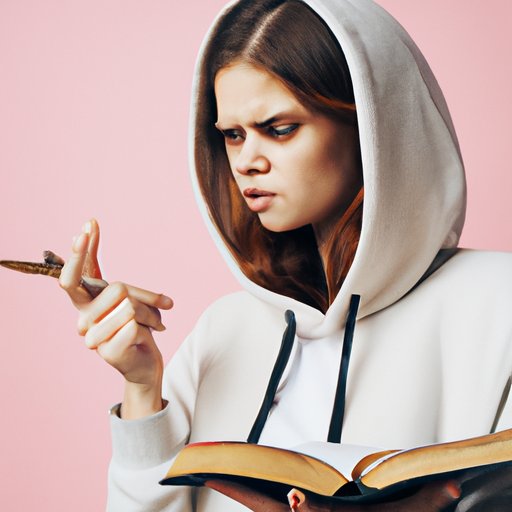Introduction
In the world of writing, there is nothing more important than capturing your reader’s attention. If your audience doesn’t feel engaged, they won’t stick around to read what you have to say. This is where the art of the hook comes in. In this article, we’ll define what a hook is, explore the different types, discuss why they’re important, and provide examples of how they’re used in literature and popular culture.
What is a Hook?
A hook refers to the opening lines or paragraph of a piece of writing that capture the reader’s attention. These opening lines are designed to spark the reader’s interest by creating a sense of curiosity or shock. Hooks are used in all genres of writing, including fiction, non-fiction, journalism, and marketing.
Examples of outstanding hooks include “Call me Ishmael” from Moby-Dick by Herman Melville and “It was a bright, cold day in April, and the clocks were striking thirteen” from 1984 by George Orwell. These opening lines set the tone and pace for the rest of the novel, inciting curiosity to keep reading.
The Art of Writing a Hook
The art of writing a hook involves selecting the right type of hook for your content. There are many types of hooks, including anecdotes, questions, and shocking statements. An anecdote can be used when you want to share a personal experience, while questions are ideal when you want to provoke the reader’s curiosity. Shocking statements are often used when you want to grab the reader’s attention and create a sense of urgency.
An example of a good hook using an anecdote would be “When I first started my business, I had no idea what I was doing. I was broke, clueless, and scared.” This opening line creates empathy with the audience and makes them curious about what happens next. A good question hook, on the other hand, could be “What would happen if every human on earth suddenly disappeared?” This opening line is interesting, and it sparks curiosity in the reader’s mind.
When crafting a hook, it’s essential to think about your audience. What are their interests, fears, or desires? How can you capture their attention and make them want to read more? Some tips and tricks for crafting effective hooks include being concise, asking questions, and using vivid descriptions.
Why Do You Need a Hook?
Hooks are vital for engaging readers and keeping them interested in your writing. Without a hook, readers may quickly lose interest and move on to something else. Hooks are particularly important in headlines, email subject lines, and blog posts. In these cases, you have just a few seconds to grab the reader’s attention. A good hook can set the tone and pace for the rest of the article, enhancing the overall reading experience.
For example, if you were writing an email to a potential client, a good hook would be “I noticed you’re struggling with your marketing strategy. I have some ideas that might help.” This opening line grabs the reader’s attention and makes them interested in hearing more.
The Different Types of Hooks
There are many different types of hooks. Factoids are interesting and shareable pieces of information that can hook a reader’s interest. Quotes can be used to start a piece of writing or used within the main text to highlight a point. Metaphors can be used to create vivid descriptions, and they can be powerful hooks for engaging your audience.
For example, a factoid hook could be “Did you know that the human brain can hold up to 1,000 terabytes of information?” This opening line is interesting and bizarre, making the reader curious about the topic at hand. A quote hook could be “The best way to predict your future is to create it” by Abraham Lincoln. This opening line is thought-provoking and creates a sense of inspiration.
Examples of Hooks in Popular Culture
There are many examples of hooks used in popular culture. Whether it’s in movies, songs, or other forms of entertainment, hooks are essential for capturing the audience’s attention. For example, the opening lines of The Godfather are “I believe in America” and “I’ll make him an offer he can’t refuse.” These hooks set the tone and pace for the rest of the movie and create a sense of suspense and intrigue. A more recent example is the opening sequence of Stranger Things, which creates a sense of mystery and nostalgia for 80s pop culture with its synth-heavy soundtrack and eerie vibe.
Conclusion
In conclusion, writing a good hook is an essential skill for any writer or marketer. A hook is the first thing that captures a reader’s attention, and it sets the tone and pace for the rest of the piece. By using different types of hooks, you can capture your audience’s interests and create a sense of curiosity.
With a great hook, you can quickly engage your readers and keep them interested in what you have to say. Remember to experiment with different types of hooks and keep your audience in mind when crafting your opening lines. By using the art of the hook, you’ll be able to engage, inspire, and capture your audience’s attention from the very first sentence.
